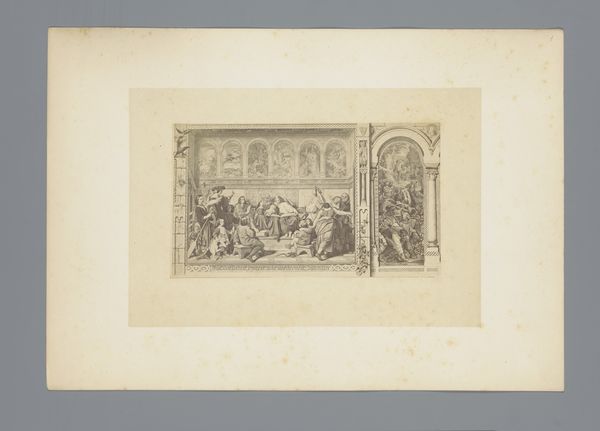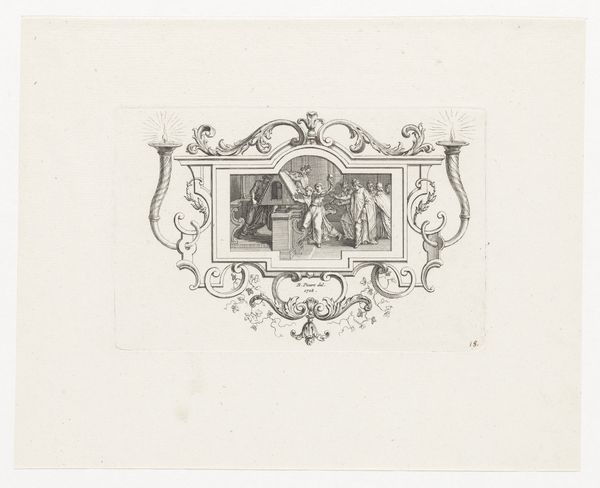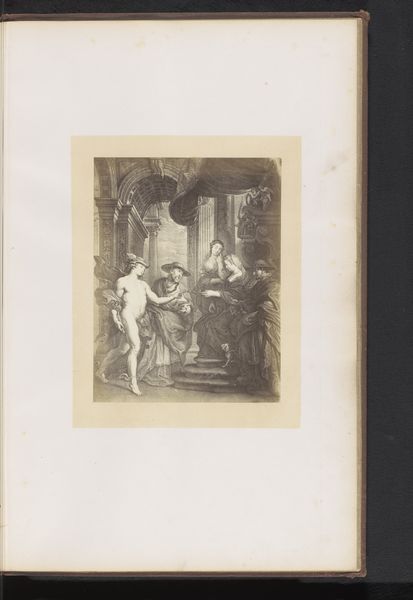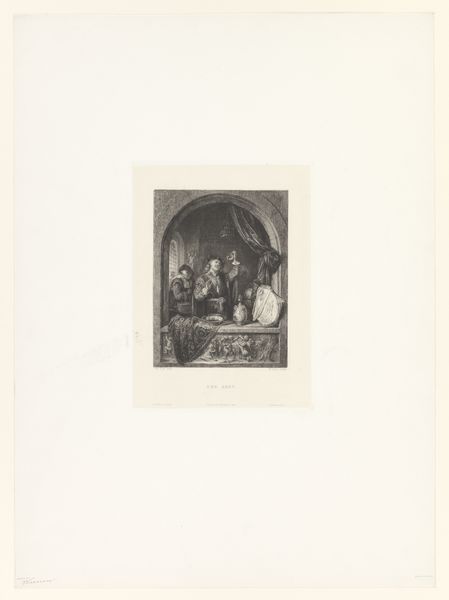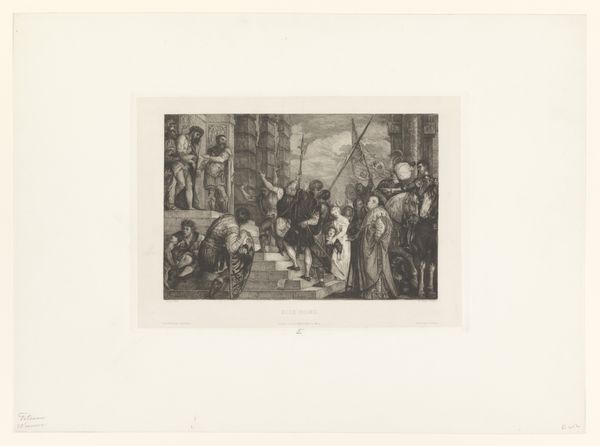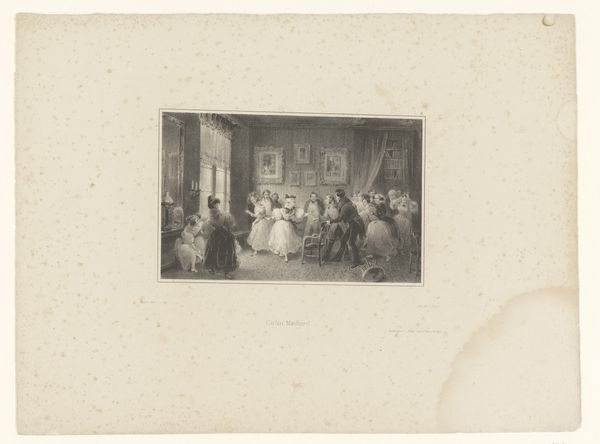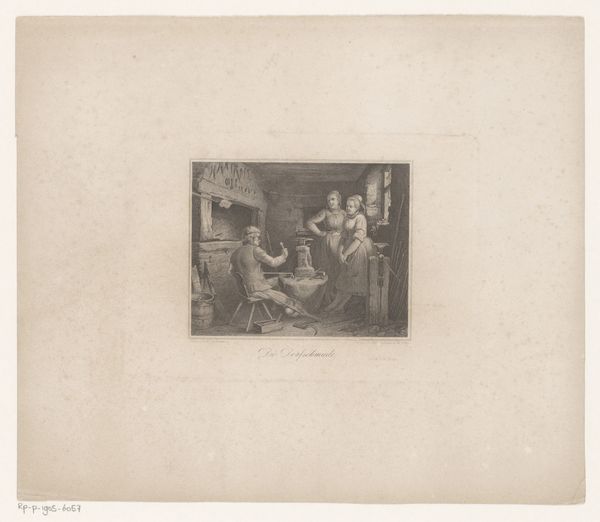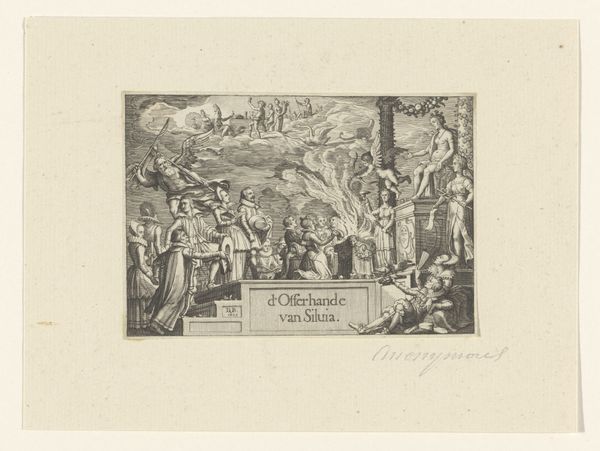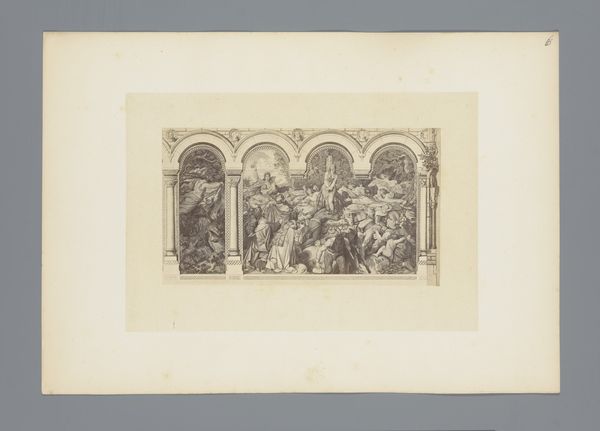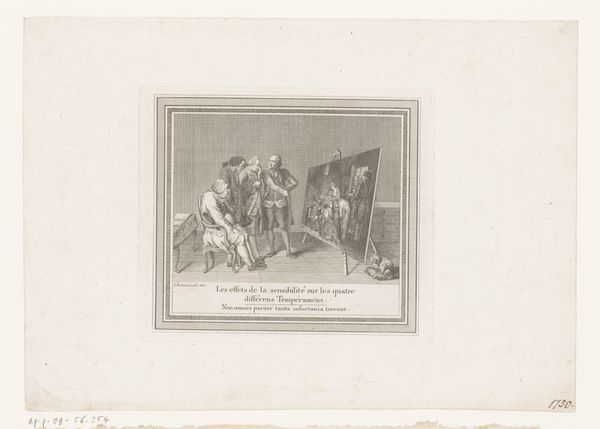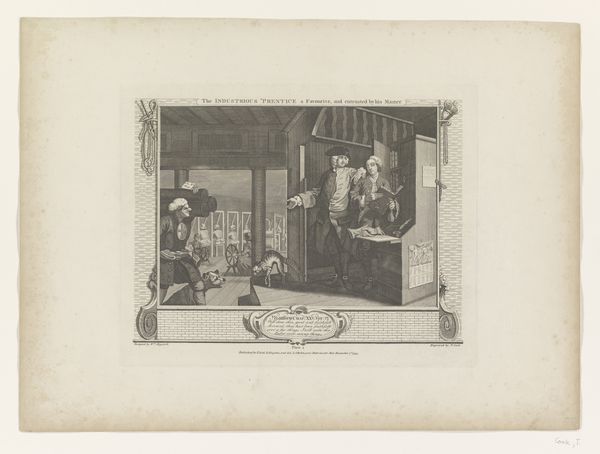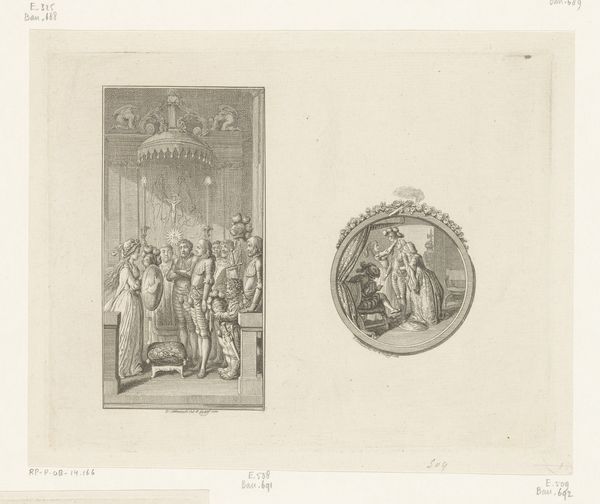
Dimensions: height 302 mm, width 367 mm
Copyright: Rijks Museum: Open Domain
Curator: The print before us, titled "De ijverige leerling vervult zijn christenplicht (plaat 2)," which roughly translates to "The diligent student fulfills his Christian duty (plate 2)", possibly dating back to 1797, showcases an interior church scene rendered as an engraving. It seems to oscillate between Baroque and Neoclassical sensibilities. What's your first impression? Editor: Stark. My immediate sense is of sharp contrasts, of line asserting itself – a reminder that this is built layer by layer with a tool and a deliberate hand. What strikes me first are the textures created solely by those linear marks. Curator: Absolutely. Note the symbolic weight inherent in its setting. Churches have long held significance, representing spiritual devotion and moral rectitude, cornerstones of social and personal life in that period. How might this iconography reflect contemporary values and ideas about duty? Editor: Well, considering the likely process...an engraver, probably part of a print shop, reproducing this for a potentially wide audience… this speaks to standardization and a broader access to moral teachings. There’s an entire industry facilitating spiritual and civic duty. I wonder about the types of paper they used. Curator: Indeed! It also feels deeply enmeshed with notions of enlightenment, yet simultaneously anchored to traditional moral and spiritual doctrines. The architecture, those long reaching arches, feel imposing in both the physical and moral sense. It seems meant to inspire religious and social obedience. The symbolism feels pervasive. Editor: True. The precision of the engraving enhances the imposing feeling. Each line works towards creating an environment of clear social rules – everything carefully delineated and rendered reproducible. How interesting the use of the engraving medium serves this narrative. It is literally enforcing lines of behavior. Curator: Precisely. It underscores the visual dialogue between art and societal norms, demonstrating how art participates in the preservation and reinforcement of dominant belief structures. An aesthetic manifesto rendered into daily practice and visual encoding. Editor: Thinking about this print now, I’m struck by how the materiality of the work, the paper and ink, serve as a constant reminder of its accessibility and reproducibility. The act of creating becomes a process of social inscription and, simultaneously, replication. Curator: Thank you; considering those layers of craft really bring another depth of understanding. It underscores its enduring relevance to this day. Editor: It's a dense and beautiful piece, where process meets practice, indeed.
Comments
No comments
Be the first to comment and join the conversation on the ultimate creative platform.

